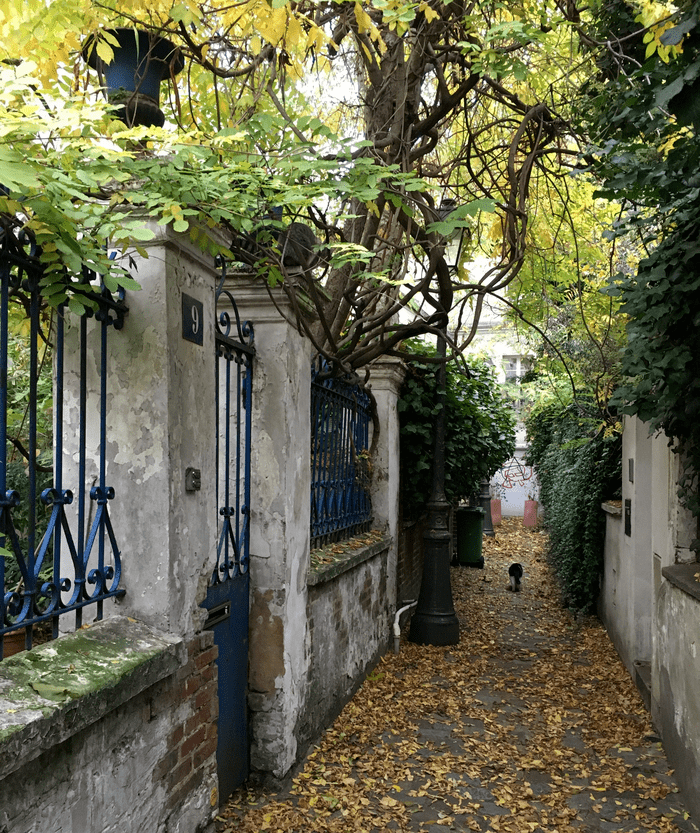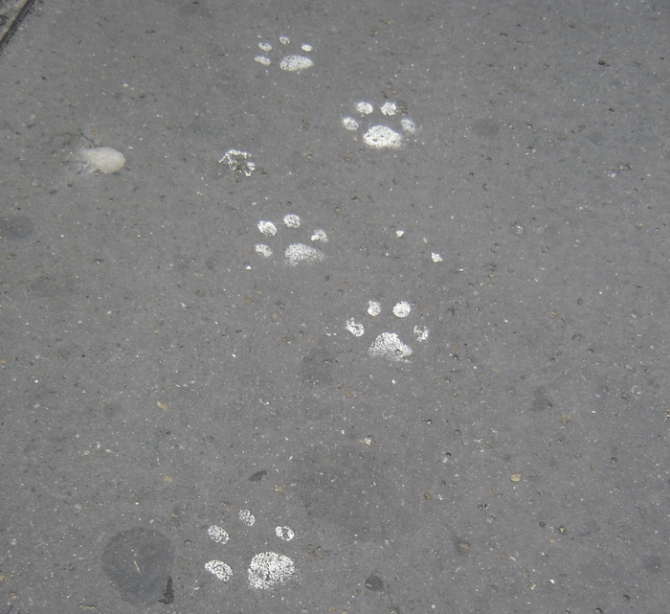Beets are Back: A Walk in Eastern Paris and a Lunch Recipe
- SUBSCRIBE
- ALREADY SUBSCRIBED?
BECOME A BONJOUR PARIS MEMBER
Gain full access to our collection of over 5,000 articles and bring the City of Light into your life. Just 60 USD per year.
Find out why you should become a member here.
Sign in
Fill in your credentials below.
Between you and me, I can’t think of any vegetable more unglamorous than beets. Before I moved to France, I associated beets with the evil witch in a fairy tale. In my mind, before she tucked into her toadstool and eye-of-newt omelet (or a small child), she would start her meal with beets.
Nowadays beets are just about as fashionable in Paris as face masks or platform Chelsea boots – even the French fashion house Maison Margiela is making them (boots, not masks). Like the boots, the humble beet has gained an all-pervasive influence in Paris, even among street artists.
Since lockdown number two began, I’ve had some time to wander in our neighborhood. Of course, it’s always within a 1 km, or a 0.62-mile radius of our apartment. This handy application, courtesy of the French government, shows you just how far you can go in any direction. Merci!
But lockdown or not, I usually take the time to stroll through the quaint cobblestoned alleys and side streets of the 19th and 20th districts. One of my favorites is the Cité de l’Ermitage. The tangle of vines and other greenery, along with the distinct presence of feline friends, make this a quiet haven just next to the bustling rue de Ménilmontant.

Can you spot the two cats in this photo of the cité de l’Ermitage? Photo © Allison Zinder
Wandering in eastern Paris also has incidental perks, like street art and free furniture. And the cats, of course. There are references to felines everywhere, whether large or small, real or just as street art.
But my favorite flâneur experience by far is catching whiffs of stewing leeks or garlicky beef, whose odors are emanating from someone’s pressure cooker. The steaming valve is usually positioned next to a rez-de-chaussée (ground floor) window, like an odor-cannon aimed straight at my nostrils.
It was during one such wander in Ménilmontant that I encountered this poster, BEETS = DEATH. I wondered what the street artist had against beets, unless s/he also considered, like my childhood self, that only witches were fit to eat this apparently fatal food.

Beets = death? Photo © Allison Zinder
Imagining how I’d rebrand the vegetable, I thought of BEETS = EARTH, owing to their pleasantly soil-like flavor. Or possibly BEETS = RED HANDS, since they tend to tint your palms while you’re peeling them. But death?
Desperate times call for desperate measures, but maybe not that desperate. It’s true that beets are wonderfully economical, which would mean following, at least at dinnertime, my French father-in-law’s favorite saying, “For breakfast, eat like a king; for lunch, like a bourgeois; and for dinner, like a pauper.”
Luckily there are more references to cats than to death in my area’s street art. My last walk unearthed a few cat teasers…. I knew I had to be getting close, with all these clues!
And then, finally, a real live cat! Starved for affection, the cat was more interested in closing in for a camera head-butt and a scratch than for posing for a picture.

I couldn’t blame the beast, so I happily obliged. Once I’d gotten my cat fix, I realized I was starving too – not for affection, but for food. Upon returning home from my walk, this lovely salad of Beets with Chèvre, Walnuts, and Orange Dust was on our menu.

Photo © Allison Zinder
Beets with Chèvre, Walnuts, and Orange Dust
This salad combines silky beets with the delightful crunch of walnuts and tangy orange. Biting into either raw or cooked beets is a truly earthy experience, as if you’re closing your mouth over tasty, sweet soil.
It’s no secret why we often pair beets and chèvre – the vegetable’s sweetness is complemented by goat cheese, which you should buy neither too fresh – if it is sitting in a little liquid underneath, that’s not a bad thing, but it’s probably too fresh for this recipe – nor too fait, meaning ripe or aged. You want just the right level of goat-y flavor to complement the sweetness of the beets without overwhelming them. But try a couple of different ones to see which is to your liking.
I enjoyed serving this chèvre with just a walnut on top as part of another meal – the walnut’s visual texture is strangely similar to the cheese’s rind!

Photo © Allison Zinder
Orange “dust” is easy to make. We used it often on plates for starters (and desserts!) when I was working at a fine-dining restaurant on an island in the Loire Valley. Apparently, the Michelin Guide also liked the effect!
Ingredients:
- 1 organic orange
- ⅔ cup (65 g) walnuts
- 14 ounces (400 g) cooked beets (not canned)
- fine sea salt and a few twists of the pepper mill
- ½ semi-firm chèvre (or more!)
- 3 tablespoons walnut oil
- 1 tablespoon orange juice (squeezed from the orange after zesting)
- a small handful of chives, 8 chives reserved for the décor, the rest finely chopped
How to make it:
- Preheat oven to 300°F (150°C).
- Using a zester or peeler, zest the orange, taking off shallow strips. You want just the outer zest (zeste), not the bitter white pith (ziste) that sometimes comes with it. If some bitter pith is still left on your strips, just scrape it off with a small knife.
- Roast the walnuts in the oven on a baking pan for about 20 minutes, turning and tossing occasionally. When you open the oven, it should smell walnutty, and if you want to taste, take care not to burn your tongue. The walnuts should be crispy all the way through, but if they’re still missing a little crunch, you can let them cool right on the pan – the residual heat will finish the job.
- Place the zest strips in a small casserole of cold water and heat over medium-high.
- As soon as the water reaches a boil, strain the zest strips, and then place them on a small square of parchment paper, spreading them out a bit.
- Place a paper towel over the top, and microwave the zest strips on medium power (about 450 watts) for 8-12 minutes. The time will depend on the length and width of your zest strips, so don’t hesitate to check them as they’re drying.
- In the meantime, shave the beets into thin slices with a mandolin (or, alternatively, cut into very thin slices using a food processor’s slicing blade). Handling these slices with care, since they’re very delicate, lay them out in a spiral pattern on four small plates.
- Remove the zest strips from the microwave, and process them in a spice grinder, or a mortar and pestle if you like. If you find they’re not turning into powder after a bit of grinding, you can put them on a small dish in the still-warm oven for a minute or two to dry them further.
- Sprinkle a little salt and pepper over the beets on the plates.
- Cut the chèvre into small cubes (about the size of your thumbnail) and distribute them between the four plates, laying them on the beets.
- Then chop the walnuts if you like, and sprinkle them over the beets and chèvre.
- Drizzle the beets with the oil and orange juice, then sprinkle the orange “dust” and the chopped chives over the plates. Decorate with the remaining chives, and enjoy!
serves 4 as a starter
Lead photo credit : Photo © Allison Zinder
More in beet recipe, cats in Paris












